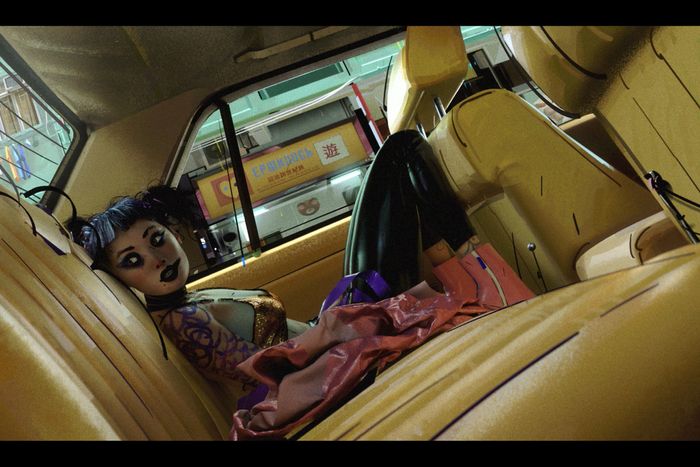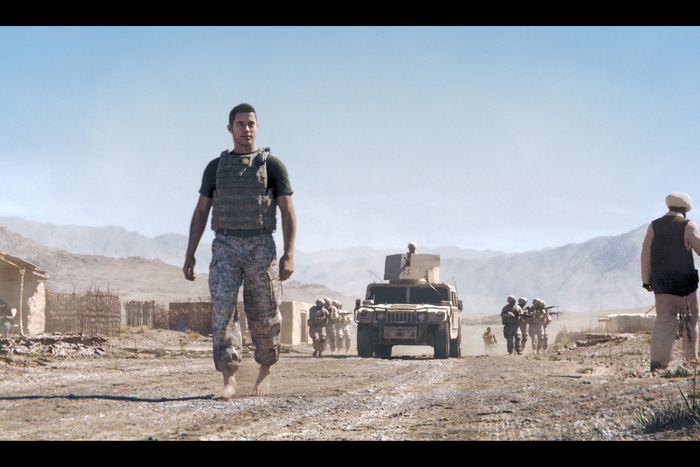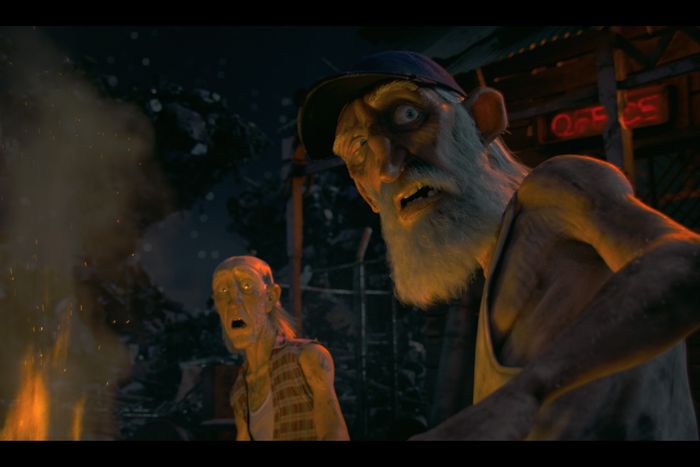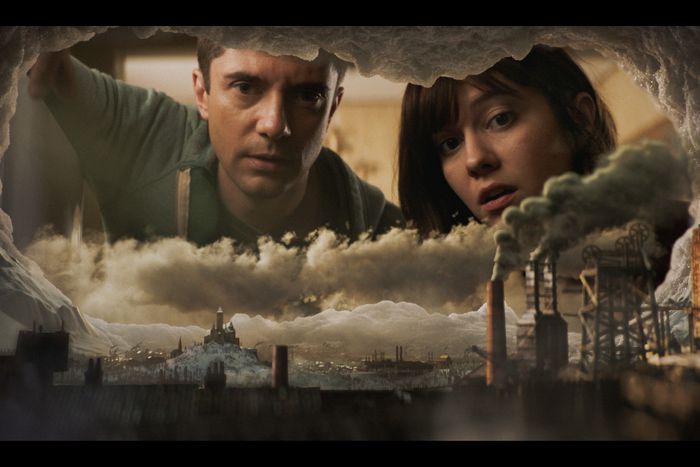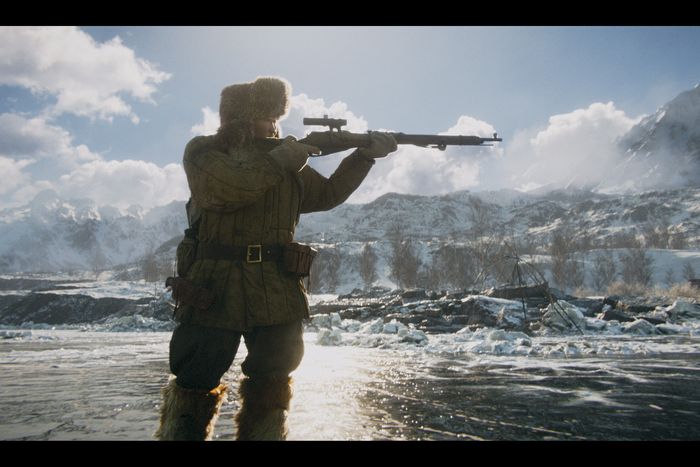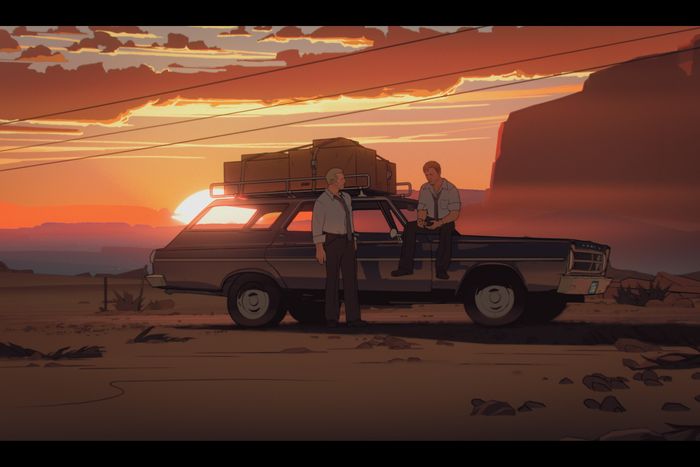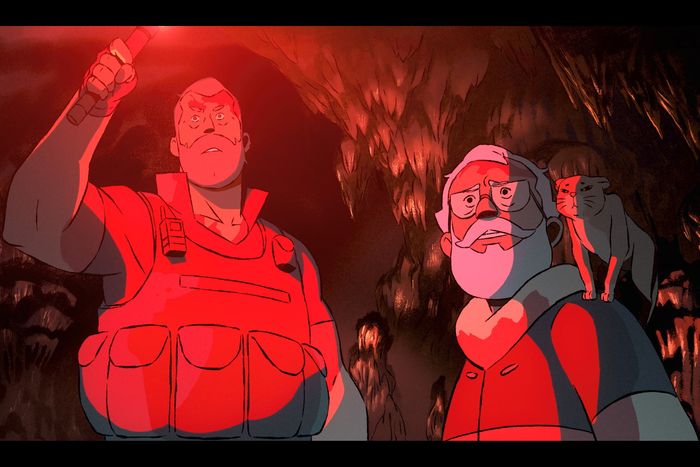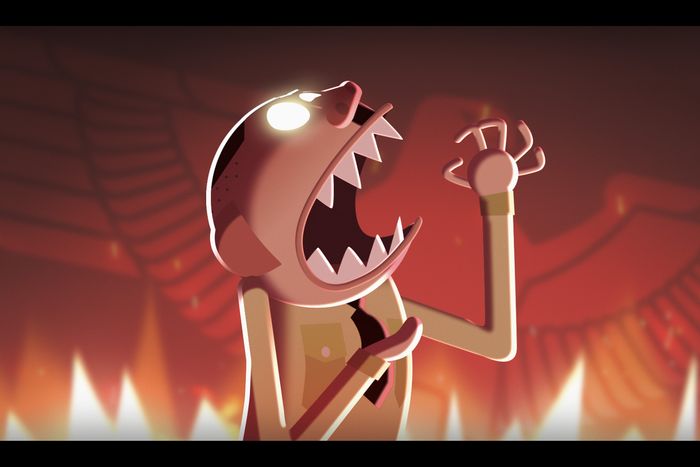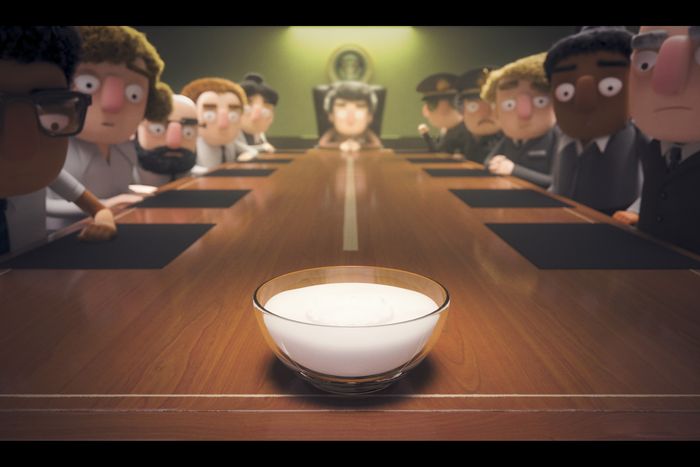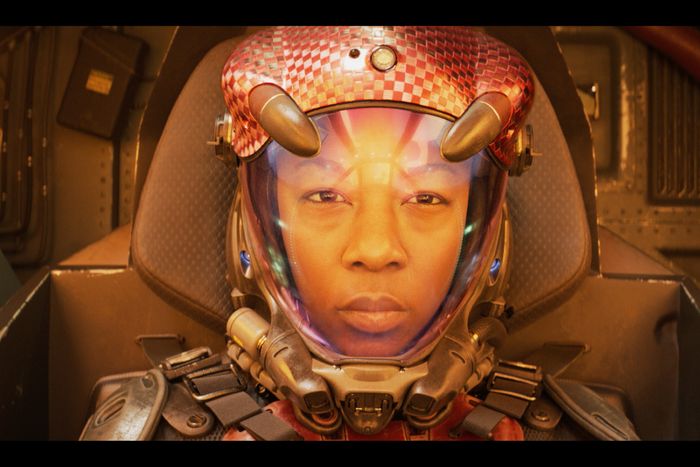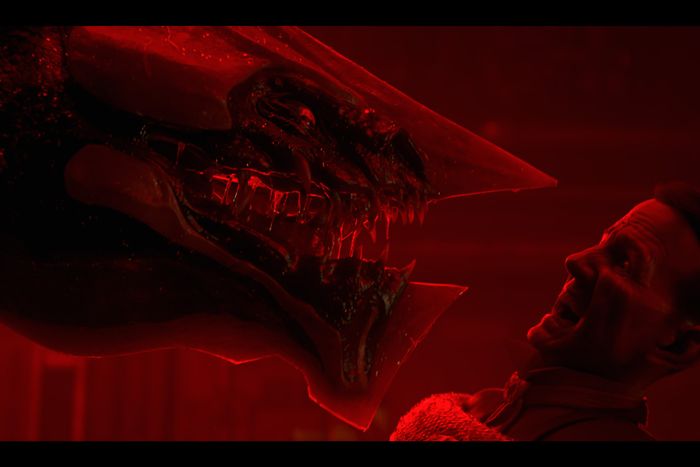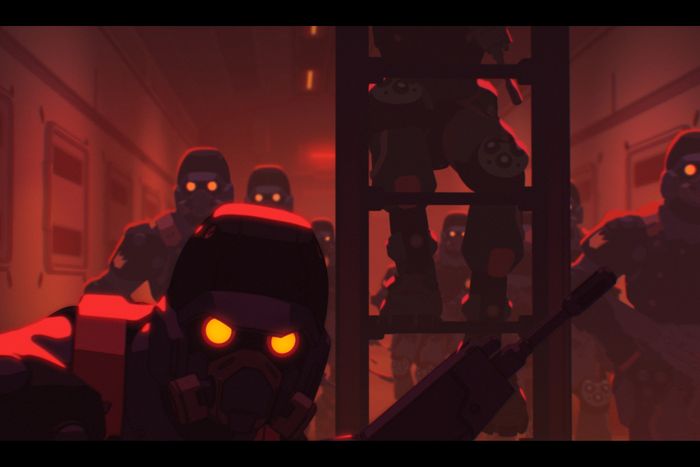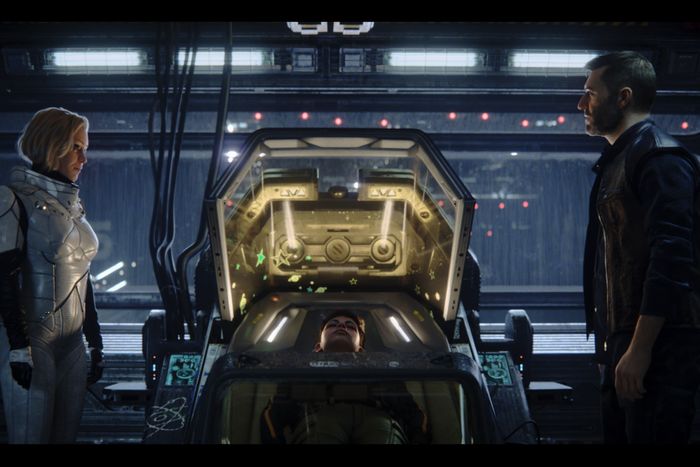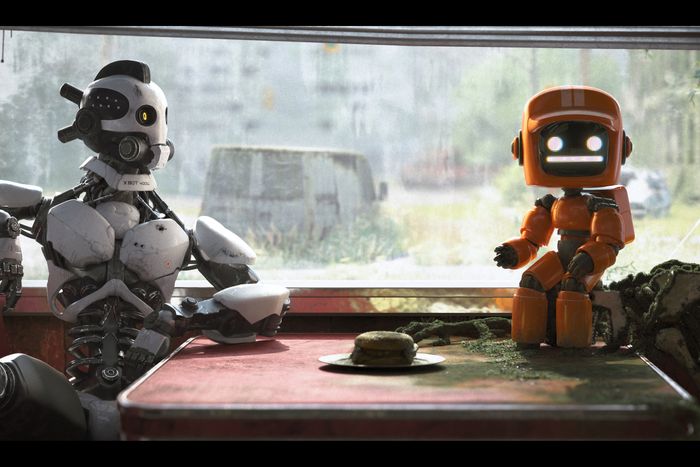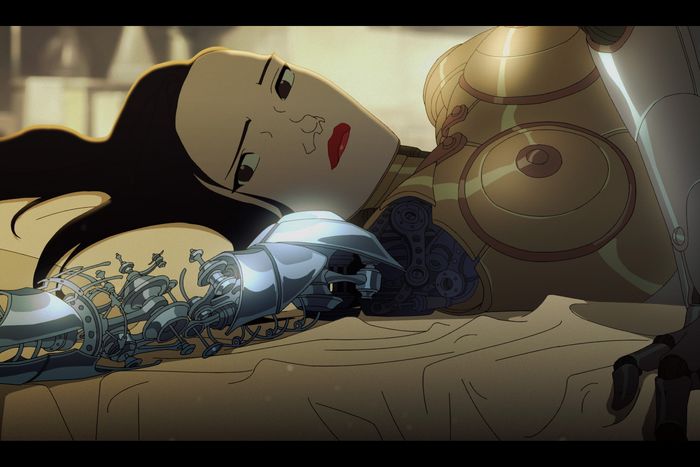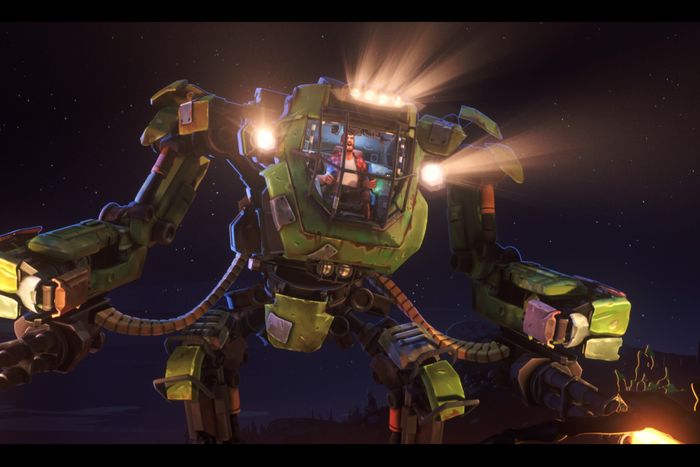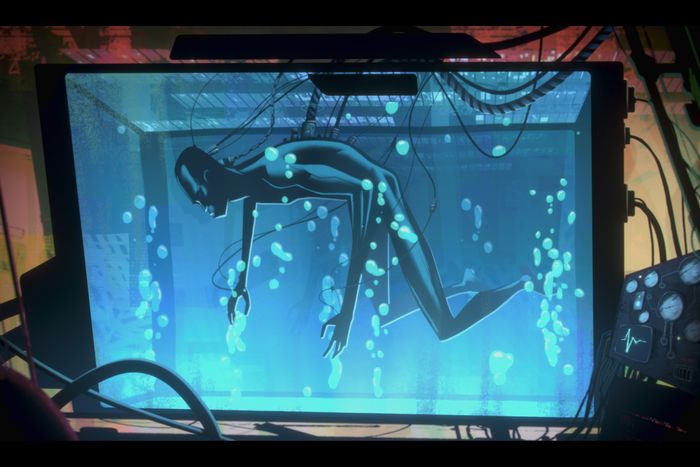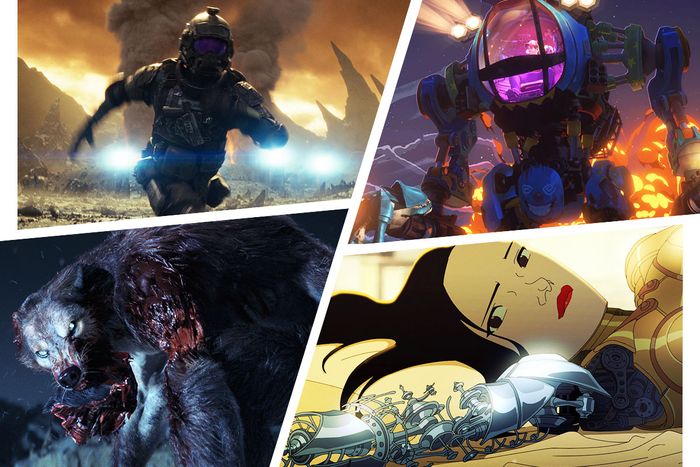
Taken as a whole, Netflix’s experimental animated series Love, Death & Robots is a pretty mixed bag. For every episode with a striking or exciting style of animation, there’s an episode with the paint-by-numbers aesthetic of a mediocre PlayStation 4 game. For every episode with a genuinely shocking twist, there’s an episode with an ending you’ve predicted from the beginning. For every original idea, there’s an idea you’ve seen dozens of times before. And, in general: Man, there is way too much sexual violence in this series.
But here’s the good news: Because Love, Death & Robots is an anthology series, you don’t actually need to watch all the episodes. In fact, you can probably skip a bunch of them and have a much better experience with the show as a whole.
So which Love, Death & Robots are actively worth seeking out? To help you determine that, I’ve ranked all 18 segments below, from worst to best, doing my best to minimize spoilers along the way. I’ve also noted whether or not each segment features love, death, and/or robots, so you can focus on the episodes that actually deliver on your favorite part of the show’s three-pronged title.
18. “The Witness”
Love: No
Death: Yes
Robots: Yes
As with any anthology series, the segments in Love, Death & Robots are all over the map — but even in their worst moments, none of them are as irredeemably awful as “The Witness.” In just 12 minutes, “The Witness” manages to encapsulate all of Love, Death & Robots’ worst qualities: Gratuitous nudity, tons of sexualized violence, and an ending that’s as confusing as it is pointless. Ostensibly a story about a murder with a sci-fi twist, “The Witness” is actually more of an excuse to show a terrified woman running naked through the streets after fleeing her shift at a strip club. Skip it.
17. “Shape-Shifters”
Love: No
Death: Yes
Robots: No
There are a few episodes of Love, Death & Robots with quasi-realistic animation that ends up falling squarely into the uncanny valley, and “Shape-Shifters” is the weakest of the bunch. This story of werewolves fighting alongside prejudiced servicemen in Afghanistan is way, way too silly to take itself so seriously, and even at 16 minutes, the whole thing is at least 5 minutes longer than it needs to be.
16. “The Dump”
Love: No
Death: Yes
Robots: Yes
There’s nothing wrong with this goofy little short — there’s just not much that’s exciting about it. Ugly Dave, a redneck who’s been squatting in a junkyard, tries to combat an eviction by warning the city manager about a garbage monster who gets bigger by consuming everything that wanders into its path. The city manager refuses to believe him, and, well, you can probably guess how things unfold from there. But even if the story is pretty meager, the ever-evolving garbage monster — a roiling, Blob-like mass that grows to include an adorable dog and Dave’s horny buddy Pearly — is a legitimately impressive feat of animation.
15. “Ice Age”
Love: Yes
Death: Yes
Robots: Yes
As the only Love, Death & Robots episode to unfold in live action, “Ice Age” gets bonus points just for breaking format. Unfortunately, the episode itself is fairly forgettable. Topher Grace and Mary Elizabeth Winstead star as a couple who discover that the refrigerator in their new apartment houses a miniature but rapidly evolving civilization, beginning with a tiny woolly mammoth and culminating in a Blade Runner–esque futuristic city. The animation used to depict the civilization is strong — and John DiMaggio, best known for voicing Futurama’s Bender, even gets in a quick little voice cameo — but the script undersells Grace and Winstead, who respond to this bizarre scenario with a shrugging detachment that’s meant to feel deadpan but ultimately just makes “Ice Age” fall a little flat.
14. “The Secret War”
Love: No
Death: Yes
Robots: No
“The Secret War” deserves nothing but praise for its visual design, which is the most convincing of the many Love, Death & Robots shorts that aim for photorealism. The problem with this segment is the story, which takes another fairly tired concept — in this case, a secret battle between Soviet soldiers and unholy monsters in the forests of Siberia — and fails to do anything new or interesting with it. “The Secret War” might make a great opening cutscene for a video game, but as a standalone short, it’s just undercooked.
13. “Fish Night”
Love: No
Death: Yes
Robots: No
When their car breaks down in the desert, a couple of traveling salesmen spend the night in the middle of nowhere and end up in a kind of trans-dimensional rift, surrounded by the ghosts of the ancient sea creatures who roamed the ocean that covered the same space millions of years before. The story itself is pretty simple, but it’s a great excuse for some truly gorgeous cel-shaded animation, as hundreds of colorful creatures swim around in the night sky. Unfortunately, it also just kind of ends, without the climax a story like this needs.
12. “Sucker of Souls”
Love: No
Death: Yes
Robots: No
Pop culture isn’t exactly lacking in revisionist takes on the Dracula story, but “Sucker of Souls” justifies its presence on Love, Death & Robots with a distinctive animation style and a darkly comic blend of Indiana Jones–esque exploration and vampire lore. A team of mercenaries discovers the feral count in a cavern, which leads to a bloody and punchy confrontation with an appropriately oh-shit ending.
11. “Alternate Histories”
Love: No
Death: Yes
Robots: Yes
“Alternate Histories” begins with one of the cleverest and most comedic concepts in Love, Death & Robots: What if there were an app that could show you exactly what would happen if you went back in time to change history? In just eight minutes, “Alternate Histories” plays out six different scenarios based on how and when Hitler dies. This is pure silliness, with consequences that include a gelatin-based super-weapon and an army of sentient rats taking over the world, but it’s a fun enough concept that I’d love to see it expanded into an actual series.
10. “When the Yogurt Took Over”
Love: No
Death: Yes
Robots: Yes
At a brisk six minutes, “When the Yogurt Took Over” is the shortest Love, Death & Robots segment — and this one might actually have benefitted from a little elaboration. The surreal, wacky story explains how the world is taken over by a bowl of sentient yogurt, which solves the world’s problems at the cost of humankind ceding all of its power. The chunky, stylized animation is among the standouts of the series, and Maurice LaMarche’s wry baritone makes him an ideal narrator for this story (and well, pretty much any voiceover job).
9. “Lucky 13”
Love: Yes
Death: Yes
Robots: Yes
Orange Is the New Black’s Samira Wiley takes center stage for this heartfelt story about a pilot’s love for her spaceship — a legendarily unlucky craft that ends up playing a key role in a desperate struggle against an alien army. This is yet another episode that would have benefitted from an animation style that wasn’t just bland, quasi-photorealistic animation in the style of something like Final Fantasy: The Spirits Within — but Wiley is great in the lead role, and the story itself is refreshingly straightforward.
8. “Sonnie’s Edge”
Love: No
Death: Yes
Robots: Yes
Netflix has reportedly experimented with four different viewing orders for Love, Death & Robots, which are randomly assigned to individual subscribers — but “Sonnie’s Edge” is the first Love, Death & Robots episode I saw, and it’s easy to see why the show would lead with it. It features the realistic-ish animation style used by many of the segments, as well as heaping doses of the sex and violence that almost seem to have been mandatory for each entry in the series. “Sonnie’s Edge” has considerable flaws, but it also has a monster versus monster gladiator arena, and a likably nasty (and legitimately surprising) final twist.
7. “Blindspot”
Love: No
Death: Yes
Robots: Yes
For pure, frantic fun, it’s hard to beat “Blindspot,” which feels like it could be the launchpad for an entire series about a crew of cyborg scoundrels robbing convoys in the post-apocalypse. The character designs are as memorable as anything in the series — I don’t think I could ever get enough of that gruff, cigar-chomping muscle-bot — and the animation itself is colorful and fluid enough to stand apart from the familiarity that makes other Love, Death & Robots segments recede into the background.
6. “Beyond the Aquila Rift”
Love: Yes
Death: No
Robots: Yes
“Beyond the Aquila Rift” is easily one of the best-constructed Love, Death & Robots stories — a sci-fi-horror story about a spaceship blown way off-course, and caught in a setting that seems too good to be true because it probably is. It’s a story that wouldn’t be out of place in Black Mirror or the new Twilight Zone — except for the lengthy, ridiculous sex scene right in the middle of the episode. It’s an embarrassing, porny excess that needlessly pads out the episode’s runtime, and it briefly turns what is otherwise one of the best segments of Love, Death & Robots into an animated riff on warmed-over Skinamax leftovers.
5. “Three Robots”
Love: No
Death: No
Robots: Yes
The “funny” segments of Love, Death & Robots aren’t always funny, but “Three Robots” is the best of the bunch. On a post-apocalyptic Earth, a trio of robot tourists touch down to explore the husk of the planet, trying to guess what humans were like based on what they see (and, of course, getting everything wrong). It’s a simple, hokey gag, but “Three Robots” doesn’t overstay its welcome, and the surreal final twist ends things with a laugh and a bang.
4. “Good Hunting”
Love: No
Death: Yes
Robots: Yes
All of the segments in Love, Death & Robots are based on short stories, but “Good Hunting” has the most impressive literary pedigree, being adapted from the story of the same name by three-time Hugo Award–winning author Ken Liu. Eschewing the futuristic, Euro-centric mold of many of the series’ segments, “Good Hunting” is set in China in the early 1900s, relying on aspects of both traditional folklore and the steampunk genre to unfold the tale of a young inventor’s lifelong friendship with a fox spirit, and the alliance that makes them both into forces whose oppressors should fear them.
3. “Helping Hand”
Love: No
Death: No
Robots: Yes
A woman working to repair a shuttle gets knocked into outer space, and is forced to rely on her cunning and inner strength to save her own skin. Yes, it sounds a lot like Gravity — but “Helping Hand” distinguishes itself with a teeth-gritting, stomach-churning solution to the problem. The story resolves itself a little too neatly, and the final line of dialogue is a groaner, but “Helping Hand” is still an ideal sci-fi short: quick, punchy, and memorable.
2. “Suits”
Love: Yes
Death: Yes
Robots: Yes
The best of the many action stories in Love, Death & Robots is “Suits,” which follows a team of farmers using mech suits to defend their homesteads against alien invaders emerging through portals. It’s a silly-sounding premise, but “Suits” is uncommonly good at getting you to genuinely care about these characters in the span of a single short. It’s well-paced, handsomely animated, and thrilling to watch, with a clever final shot that completely re-contextualizes everything you think you’ve seen.
1. “Zima Blue”
Love: Yes
Death: Yes
Robots: Yes
The strangest, most thought-provoking, and all-around most ambitious Love, Death & Robots segment is “Zima Blue,” which tells the story of a reclusive artist whose decades of widely discussed masterpieces have been characterized by a peculiar obsession with a certain shade of blue. The hyper-stylized animation is unlike anything else in Love, Death & Robots, and the story breaks away from the series’ usual laser-focus on sex and violence for a headier and more philosophical take on what it means to be alive. (And I guarantee you won’t guess the final twist.)
Correction: A previous version of this post incorrectly credited Chris Parnell as the narrator in “When The Yogurt Took Over.” Parnell appears in “Three Robots,” while the narrator in “Yogurt” is Maurice LaMarche. We regret the error.


